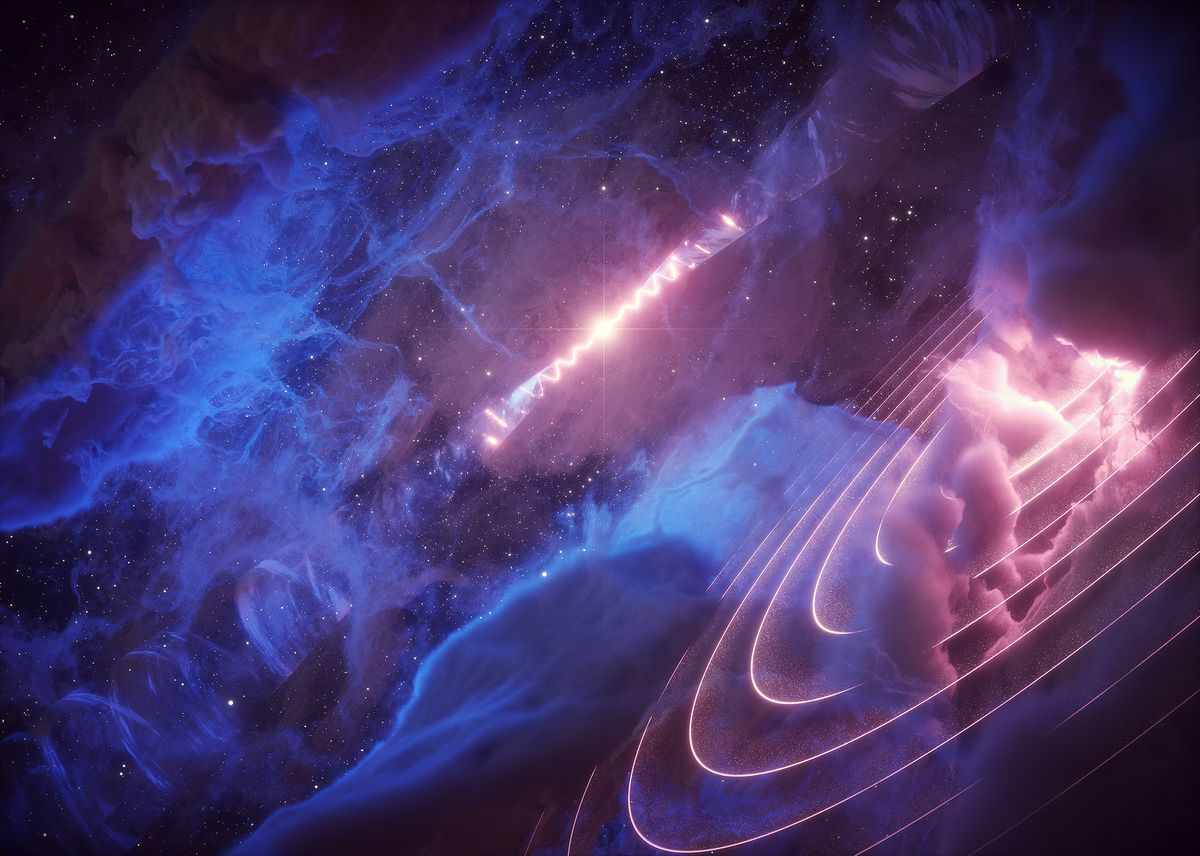
A cosmic gas cloud has a mysterious gamma-ray "heartbeat" that appears to be in sync with a neighboring black hole.
Using data from the Arecibo Observatory in Puerto Rico and NASA's Fermi Gamma-ray Space Telescope, an international team of researchers found the "heartbeat" in a cosmic gas cloud in the constellation Aquila, the eagle. The cloud "beats" in rhythm with a miniature black hole located roughly 100 light-years away, suggesting the objects are connected in some way, according to a statement from the DESY national research center in Germany.
The black hole is part of a microquasar system known as SS 433, which includes a giant star that is approximately 30 times the mass of the sun. A microquasar is just a small quasar, the brightest type of object in the universe, which consists of a large black hole that emits extraordinary amounts of light as it gobbles up its stellar neighbors. As the two objects in SS 433 orbit each other, the black hole pulls in matter from the giant star, creating an accretion disk around the black hole.
Related: The strangest black holes of the universe
"This material accumulates in an accretion disc before falling into the black hole, like water in the whirl above the drain of a bath tub," Jian Li, lead author of the study from the DESY national research center, said in the statement. "However, a part of that matter does not fall down the drain but shoots out at high speed in two narrow jets in opposite directions above and below the rotating accretion disk."
The jets consist of high-speed particles and ultra-strong magnetic fields that produce X-rays and gamma rays, which are detected by the Fermi Space Telescope. However, the accretion disk wobbles, or precesses, meaning that the two jets shoot out into space along a spiral path, instead of a straight line, according to the statement.
The microquasar SS 433 sways with a period of 162 days. Simultaneously, the researchers found the same pattern of behavior in the gamma-ray signal emanating from the inconspicuous gas cloud, which they have named Fermi J1913+0515. Their findings, published Aug. 17 in the journal Nature Astronomy, suggest the gas cloud's emission, or "heartbeat," is powered by the microquasar.
However, the two objects are located relatively far apart, at a distance of about 100 light-years. Therefore, further observations are needed to fully understand how the black hole powers the heartbeat in the gas cloud.
"Finding such an unambiguous connection via timing, about 100 light years away from the microquasar, not even along the direction of the jets is as unexpected as amazing," Li said in the statement. "But how the black hole can power the gas cloud's heartbeat is unclear to us."
Follow Samantha Mathewson @Sam_Ashley13. Follow us on Twitter @Spacedotcom and on Facebook.
"gas" - Google News
August 19, 2020 at 06:51PM
https://ift.tt/3278b3v
Mysterious gamma-ray 'heartbeat' detected from cosmic gas cloud - Space.com
"gas" - Google News
https://ift.tt/2LxAFvS
https://ift.tt/3fcD5NP
Bagikan Berita Ini















0 Response to "Mysterious gamma-ray 'heartbeat' detected from cosmic gas cloud - Space.com"
Post a Comment